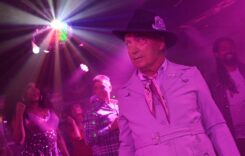OCTOBER 15, 2015
There’s a legend of an Afghani hero in 1880 named Malala. In the Battle of Maiwand against the English invaders, the Afghanis began to lose heart and retreat, but it wasn’t until Malala picked up their flag and inspired them to fight that the tide was returned. In the fight, however, Malala was shot and killed, but she has been honored as a martyr in her native land until this day.
The name Malala means something entirely different today, thanks to the courage of Pakistani teenager Malala Yousafzai. When she was 12, she began to write a blog anonymously for the BBC about the Taliban occupation of her country as well as their edict that banned girls from attending school. As the blog began to get worldwide attention, Malala came out and began to speak in televised interviews about the rights of girls to an education.
The Taliban, which was in control of her town at the time, targeted her as a subversive, and in October 2012, a Taliban gunman boarded her school bus and shot her in the head. Malala was injured critically and transferred to the safety of a hospital in Birmingham, England, where she and her family now reside. In part because of her high media profile, her cause was taken up internationally. Malala soon became a symbol of inspiration and has traveled all over the world to raise awareness of a number of pressing issues, from the kidnapping of hundreds of Nigerian schoolgirls to the plight of refugees from Syria. For her efforts, Malala, at age 17, became the youngest person ever to be awarded the Nobel Peace Prize.
She also authored a best-selling memoir, “I Am Malala,” which is credited as the inspiration for this documentary portrait, directed by acclaimed filmmaker Davis Guggenheim. The fact that the film changed its title to “He Named Me Malala” might suggest that the doc will be taking a slightly different angle on the oft-told Malala story. It doesn’t. If Malala is ever given an honorary Oscar, this is just the kind of puff piece that would precede her standing ovation.
Guggenheim seems content with contrasting the revered international peacemaker Malala with the fun-loving teenager at home — razzing her younger brothers, showing off her poor test grades in school, watching “Minions” on her tablet and mooning over photos of handsome athletes online.
Granted, Guggenheim is hampered by the fact that there is no film footage of Malala prior to the shooting, so he fills in the gap with animation, illustrating key moments in her early life with simply-drawn cartoons. It’s a creative solution to an unfortunate situation, but it still makes the film feel a bit incomplete.
Guggenheim, who directed the Oscar-winning “An Inconvenient Truth” as well as “Waiting For Superman,” is an activist filmmaker, and he regularly adds websites to the credits of his films (as he does here) to drive the audience to become socially active as well. And that’s fine, as far as it goes. But sometimes he misses some elements of his story that, if explored, could make for a deeper, more illuminating film.
For example, why change the name of the film to “He Named Me Malala” if you don’t bother digging into who “he” is. He is Malala’s father Ziauddin, who overcame a stammer in his youth to become a powerful speaker against the ruling class. He now travels with Malala everywhere and is in effect, her manager — the Kris Jenner of activism. He’s a fascinating character who’s never fully developed.
There is a very short section of the film where Guggenheim allows the critics of Malala and her family to be heard — their main complaint is that Malala is doing this for the fame and fortune, but there’s also a telling criticism that her father is using Malala as a mouthpiece for his own ideas, a potentially explosive angle that Guggenheim has little interest in exploring.
Or what effect does being plucked from a small village in Pakistan to become an icon in the world’s great capitals have on a teenager? We’ll get an “ooh” and “aah” from her now and then, but mostly she’s shown as poised and collected while she lectures the world’s leaders. This is no knock on Malala herself, who’s a delightful young woman whom that camera just loves, but it seems to be yet another missed opportunity.
It’s just a shame that Guggenheim didn’t dig a little deeper into some of the paradoxes of Malala’s family story. With access to such a unique situation, he might have chosen to make a more complex film instead of an agreeable puff piece. As it is, “He Named Me Malala” seems more appropriate for a high-school social studies class than for the multiplex.
GRADE: C+












